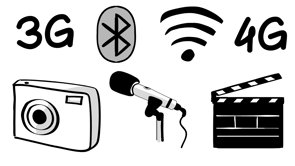The following story by Richard Jordan was originally published on Tales Told From the Road and is reprinted here with the author’s permission.
I am both a travel writer who incorporates video into stories posted on Tales Told From The Road and someone who produces “shorts” for airing on public access TV stations.
So when I first learned that one could shoot aerial footage with a GoPro camera mounted on a relatively cheap-to-own unmanned drone, I immediately became enthralled by the idea of producing my own “Over _________ (pick a place name, any place name)” videos.
However, as I pointed out in “Droning Over National Parks” government regulations thwart my ability to record such video over one of my favorite types of destinations, U.S. national parks.
Last fall, in “The Right to Bear Cameras” I pointed out that despite the First Amendment’s provision on freedom of speech and the press, in the U.S. there is not an unfettered right to take still photos (let alone video shot from on or above the ground) even on public property. If the photographs or video will be used for a “commercial” purpose, you may well need to obtain (and pay for) a permit from the agency that has jurisdiction over the property.
The Federal Aviation Administration has recognized that allowing such “Unmanned Aircraft Systems” to fly willy-nilly across America is probably not a good idea. “FAA Drone Rules” spell out what is okay and what is not for different types of “UAS” operations.
Last month The New York Times ran a piece discussing the FAA’s proposed rules on restricting the commercial use of drones.
But what evidence will the FAA rely on to determine whether you are using your drone to record video for a “commercial” purpose? As it turns out, posting a video shot from a drone on YouTube may be all that the agency needs.
A recent Motherboard article reported that the FAA has warned Jayson Haynes, a Tampa, Florida drone hobbyist who posted drone videos on YouTube that “because there are ads on YouTube, [his} flights constituted a commercial use of the technology subject to stricter regulations and enforcement action from the agency. It said that if he did not stop flying ‘commercially,’ he could be subject to fines or sanctions.”
The video Haynes shot using a drone does, indeed contain an ad (for drones):
Here’s how Motherboard frames the issue in this case: “Where, exactly, does commercial use begin and hobby use end, for instance? If you fly for fun, but happen to sell your footage later, were you flying for a “commercial purpose?” What if you give it to a news organization that runs it on a television station that has ads on it? What if you upload it to YouTube and Google happens to put an ad on it? What if you decide to put an ad on it?”
So is Haynes likely to earn “real money” by having ads inserted in his YouTube videos?
Using the YouTube Money Calculator I estimated that he’s probably made a whopping $12.32 – $30.79 so far from his “Everglades Challenge 2015” video, and $100.93 – $252.33 from “Haynes Drone Video”
Most of his videos have had only 100-300 views, worth to him just about $0.14-$1.02 in ad revenue each.
If Haynes is addicted to Starbucks espresso drinks, his YouTube videos may be funding his “habit,” but as visually interesting as his aerial filmography may be, in earnings it hardly matches what a professional video production company might charge a client for producing advertising-quality films to post on YouTube or Websites, or run on television.
If Haynes’ YouTube Channel was in “Top 1000 YouTube Channel Earnings” the FAA could easily make a case that his drone flights were “commercial” in nature. But if YouTube itself is not profitable, then one might surmise that video ad revenue is not creating much jingle in the jeans for the majority of its “filmmakers.”
If you were on Santa’s “Nice” list last Christmas, maybe he left a drone under the tree for you. Want some “visual advice” from the FAA about flying that drone and staying off the FAA’s “Naughty” list? You’ll find it on FAA YouTube Channel, of course!
If the FAA had run an ad in that video it would have earned $298.06 – $745.16 to help fund its enforcement action against Haynes.
The lesson to be learned from “FAA v. Haynes”? Perhaps it’s to post your drone-recorded vacation videos ad-free on Vimeo, or on Instagram or Facebook.
Dick Jordan is a San Francisco Bay Area travel writer and blogger who publishes Tales Told From The Road, The Eclectic Online Travel Magazine for Independent Thinkers and Travelers.” His television programming has aired on MarinTV and other public access stations from California to Maine and can be viewed on his YouTube channel Tales Told From the Road.



 Previous post
Previous post
 Next post
Next post





